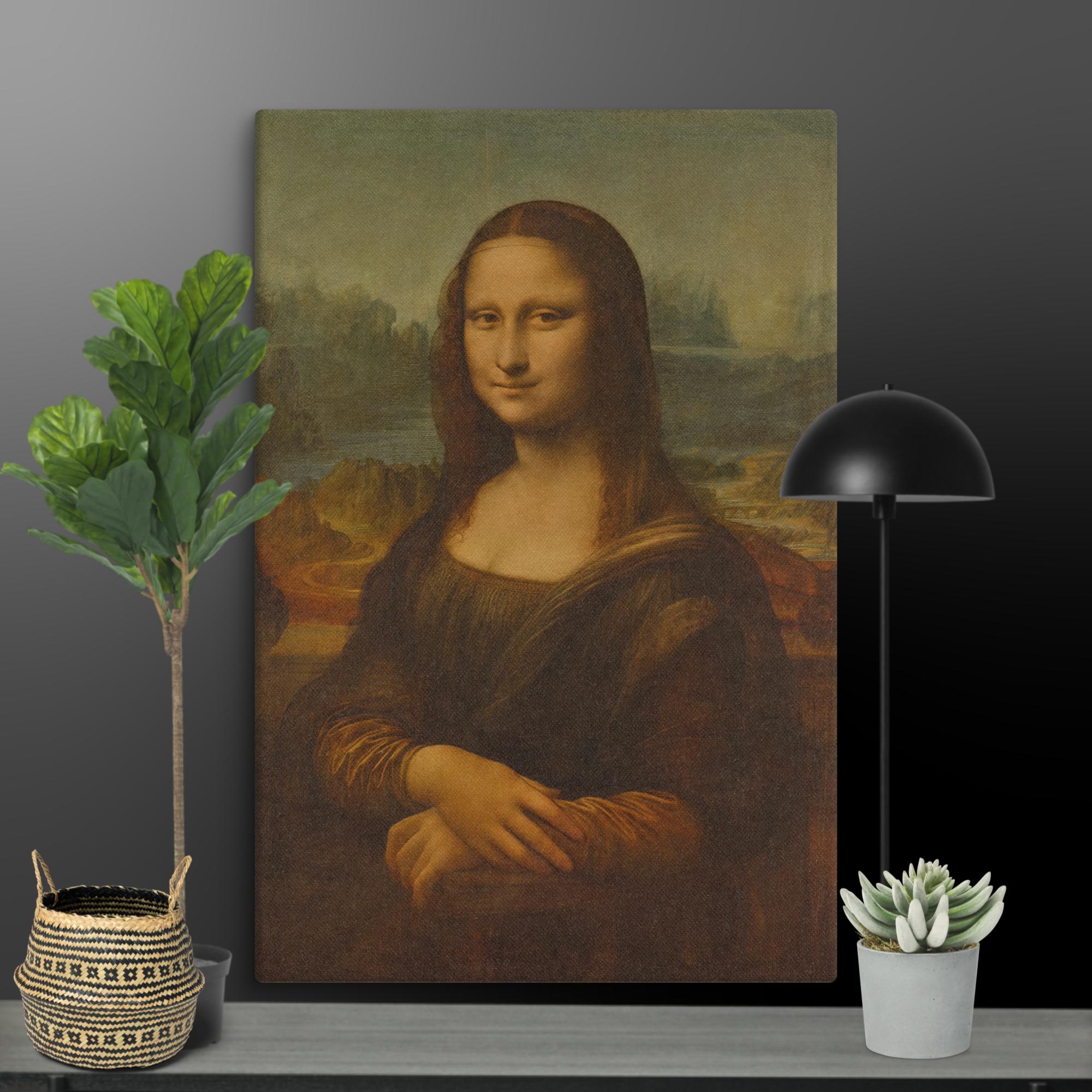
Mona Lisa
The enigmatic Mona Lisa is one of the most celebrated and recognized works of art in the world. Created by the legendary artist Leonardo da Vinci during the Italian Renaissance, this iconic portrait has captivated audiences for centuries. While much attention has been given to the artwork itself, the life of the woman depicted, Lisa Gherardini, often referred to as Mona Lisa, is equally fascinating. This article explores who Mona Lisa was, delving into her early life, marriage and later life, death, and the legacy that ensued.
Who Is Mona Lisa?
The Mona Lisa, also known as “La Gioconda,” is widely believed to be a portrait of Lisa Gherardini, an Italian noblewoman. The title “Mona Lisa” is derived from “Monna Lisa,” meaning “Lady Lisa” in Italian. Lisa Gherardini was born in Florence in 1479 into a modest but respected family. Her father, Antonio Maria Gherardini, was a successful wool merchant, and her mother, Lucrezia del Caccia, came from a noble lineage. The Gherardini family was part of the Florentine gentry, and Lisa grew up in a bustling city that was the epicenter of art, commerce, and intellectual activity during the Renaissance.
Early Life
Lisa’s early life was typical for a young woman of her social standing. She was one of several children and likely received a basic education focused on household management and religious instruction. Florence in the late 15th century was a dynamic environment, with the city’s rich cultural and artistic heritage undoubtedly influencing Lisa’s upbringing. Although there are few surviving records about her early years, historians agree that her family’s status provided her with a relatively comfortable life, albeit not one of great wealth.
Marriage and Later Life
At the age of 15, Lisa married Francesco del Giocondo, a wealthy Florentine silk merchant. The union was arranged, as was customary at the time, and it served to strengthen the ties between their families. Francesco was significantly older than Lisa, but their marriage appeared to be stable and fruitful. The couple resided in a well-appointed home in Florence and had five children: Piero, Andrea, Camilla, Marietta, and a son who passed away in infancy. Lisa was known to be a devoted wife and mother, managing her household and raising her children in accordance with the expectations of women in Renaissance society.
It is believed that Francesco commissioned Leonardo da Vinci to paint Lisa’s portrait in celebration of their home’s purchase or perhaps the birth of one of their children. The exact reason for the commission remains a subject of debate among art historians, but the resulting masterpiece would immortalize Lisa’s likeness and elevate her to global fame.
Later Life and Death
Lisa’s later years were marked by personal and societal changes. Francesco del Giocondo faced financial challenges toward the end of his life but managed to maintain the family’s status. After Francesco’s death in 1538, Lisa is believed to have entered the convent of Sant’Orsola in Florence, where one of her daughters, Camilla, was already a nun. Lisa spent her final years in quiet reflection, passing away in 1542 at the age of 63.
Death and Outcome
Lisa Gherardini’s death went largely unnoticed outside her immediate family and community. However, her association with Leonardo da Vinci’s masterpiece ensured her place in history. The Mona Lisa painting became part of the French royal collection after Leonardo brought it to France, and it was eventually housed in the Louvre Museum in Paris, where it remains today. The portrait’s enigmatic smile, captivating gaze, and masterful technique have made it an enduring symbol of artistic achievement.
The legacy of Lisa Gherardini extends far beyond her life as a Florentine noblewoman. Through Leonardo’s genius, her image has transcended time and geography, becoming a universal icon of beauty, mystery, and art. The Mona Lisa has inspired countless interpretations, analyses, and reproductions, solidifying its status as one of the most important cultural artifacts in human history.
In conclusion, while Lisa Gherardini lived a relatively ordinary life for her time, her portrayal in Leonardo da Vinci’s Mona Lisa elevated her to extraordinary heights. Her story is a testament to how art can immortalize the seemingly mundane and turn it into something timeless and profound.
The Mona Lisa: A Masterpiece of Art and Mystery
The Mona Lisa, painted by the renowned Italian artist Leonardo da Vinci, is arguably the most famous painting in the world. Its enigmatic smile, intricate detail, and the aura of mystery that surrounds it have fascinated viewers for centuries. Beyond its aesthetic appeal, the Mona Lisa has a rich history filled with intrigue, drama, and global admiration. In this blog post, we will explore various aspects of the Mona Lisa, including its creation, history, theft, vandalism, conservation efforts, and enduring legacy.
The Mona Lisa
The Mona Lisa, also known as La Gioconda, is a portrait of Lisa Gherardini, a woman from Florence and the wife of Francesco del Giocondo. The painting is a half-length portrait, measuring 77 cm by 53 cm, and is executed in oil on a poplar wood panel. It depicts Lisa seated in front of a hazy, dreamlike landscape, characterized by winding paths, distant mountains, and a serene river.
The most captivating aspect of the Mona Lisa is her subtle, enigmatic smile. Depending on the viewer’s perspective, her expression seems to shift between serenity, amusement, and even melancholy. This optical illusion, achieved through Leonardo’s mastery of sfumato (a technique that blends tones and colors to create a soft, realistic effect), adds to the painting’s allure.
The composition is meticulously balanced, with Lisa’s figure forming a stable triangular shape. Her gaze, directly meeting the viewer, creates a sense of intimacy and immediacy. The attention to detail, from the delicate rendering of her hands to the intricate folds of her clothing, demonstrates Leonardo’s unparalleled skill as a painter and observer of nature.
History of the Mona Lisa
Leonardo da Vinci began working on the Mona Lisa in 1503 and continued refining it over several years. Although the exact timeline is debated, it is believed that Leonardo worked on the painting intermittently until 1519, the year of his death. The Mona Lisa was never delivered to its intended patron, Francesco del Giocondo, and instead remained in Leonardo’s possession.
After Leonardo’s death, the painting was acquired by King Francis I of France and became part of the French royal collection. It was displayed in several royal residences before finding its permanent home in the Louvre Museum in Paris. Over the centuries, the Mona Lisa’s reputation grew, and it became a symbol of artistic excellence and innovation.
Refuge During Times of Conflict
During times of upheaval, the Mona Lisa was carefully safeguarded to prevent damage or loss. During the French Revolution, it was moved to the Louvre for public display. In 1911, it was stolen but recovered two years later.
In World War II, as the Nazis advanced into France, the Louvre’s curators took extraordinary measures to protect the Mona Lisa. The painting was evacuated and hidden in various locations across the French countryside, including the Château de Chambord, to keep it out of enemy hands. These efforts ensured the preservation of this priceless masterpiece.
The Theft of the Mona Lisa
One of the most dramatic events in the Mona Lisa’s history occurred on August 21, 1911, when it was stolen from the Louvre. The thief, Vincenzo Peruggia, was an Italian handyman who believed the painting should be returned to Italy as a symbol of national pride. Peruggia hid in a storage closet overnight and stole the painting early the next morning.
The theft shocked the world and made headlines in newspapers across the globe. For two years, the Mona Lisa’s whereabouts remained a mystery. It was finally recovered in 1913 when Peruggia attempted to sell the painting to an art dealer in Florence. The Mona Lisa was returned to the Louvre, where it was greeted with great fanfare. Ironically, the theft contributed significantly to the painting’s global fame.
Acts of Vandalism
Over the years, the Mona Lisa has been targeted by several acts of vandalism. In 1956, a man threw acid at the painting, damaging its lower portion. Later that year, another individual hurled a rock at it, chipping the paint near the subject’s left elbow. These incidents led to increased security measures, including the installation of bulletproof glass.
In more recent years, the Mona Lisa has been subject to harmless but symbolic protests. For example, in 2022, a man disguised as an elderly woman smeared cake on the glass protecting the painting to raise awareness about climate change. Thanks to modern conservation measures, these incidents caused no harm to the artwork itself.
Conservation Efforts
The Mona Lisa has undergone minimal restoration over the centuries, reflecting a philosophy of preservation rather than alteration. Experts have focused on maintaining the stability of the wooden panel and protecting the painting from environmental factors such as humidity, temperature fluctuations, and light exposure.
Today, the Mona Lisa is displayed in a climate-controlled glass case at the Louvre. The case is designed to protect the painting from dust, vibrations, and potential acts of vandalism. Regular inspections and non-invasive imaging techniques ensure the long-term preservation of this iconic work.
Legacy and Fame
The Mona Lisa’s influence extends far beyond the art world. It has become a cultural icon, inspiring countless reproductions, parodies, and references in popular media. From Salvador Dalí’s mustachioed rendition to Andy Warhol’s pop art interpretations, the Mona Lisa has been reimagined in countless ways.
The painting’s enigmatic quality has also sparked endless speculation and analysis. Some theories suggest hidden meanings in Lisa’s smile or the landscape behind her. Others focus on Leonardo’s techniques and use of symbolism. These mysteries continue to captivate art historians, scientists, and the general public alike.
The Mona Lisa’s fame has also made it a symbol of the Louvre itself, attracting millions of visitors each year. Despite the crowds and the challenges of viewing it up close, the painting retains its ability to mesmerize and inspire awe.
The Mona Lisa is an evidence to the genius of Leonardo da Vinci and the enduring power of art to transcend time and culture. Its rich history, marked by moments of drama and triumph, adds to its mystique. Whether admired for its artistic brilliance, enigmatic smile, or historical significance, the Mona Lisa remains a masterpiece that continues to captivate and inspire people around the world.





